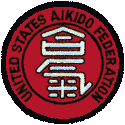

About Aikido of Champlain Valley
The Meaning of Shoshinby Benjamin Pincus SenseiChief Instructor, Aikido of Champlain Valley
Welcome to the official newsletter of Aikido of Champlain Valley. The theme of this issue is also the title of our newsletter, Shoshin — Beginner's Mind. This concept originates in Zen Buddhism, a tradition that cultivates a meditative state of clarity and simplicity. Imagine experiencing the world as a child does, tasting each moment as something new and delicious. Within the context of aikido, every class, technique and moment in time becomes vital, immediate and relevant to one's practice and life, no matter how repetitive or difficult. The cultivation of shoshin separates aikido practice from mere calisthenics. I may cut with a bokken (wooden sword) a thousand times. While I cut, my mind might wander. I think about cold beer and pizza or a good massage. Afterwards, I admire my blisters and feel virtuous in a sweaty kind of way. In contrast, I might have a student who has practiced bokken for three months. Her coordination is a bit off, but she is continually mindful of the quality and feel of every motion, each cut. She has found a rhythm in which every moment matters, because she is aware of the fundamental newness of the movement. This is beginner's mind. Aikido in the spirit of shoshin teaches us how to be receptive to new experiences and new methods of learning. At our dojo, I emphasize learning by doing, an important element of Budo training (the Japanese arts of war). Do not question, just practice, and then practice itself becomes a spiritual path, a method of deep self-inquiry. Sometimes a student will say "I can't do this..." and I interrupt before we begin a dialogue. "Show me," I reply. I want people to taste quiet, focused practice, learning through movement instead of relying on verbal cures. First taste, then question. Keep in mind that tasting takes many years because aikido, after all, is a lifetime practice. I believe that this newsletter can be an important resource, as we continue our practice. Part of our mission as a non-profit organization is the exploration of the relationship between Western and Japanese pedagogy. The newsletter complements our emphasis on physical training and meditation (intuitive, repetitive and non-verbal methods of experiential education). Here we can question, challenge and explore a foreign martial art and philosophical tradition. This intellectual inquiry helps us make aikido our own, while traditional etiquette, hierarchy and the dojo environment retain elements that are uniquely Japanese. In the upcoming spring issue we will explore the paradoxical nature of aikido. How does a warrior art teach healing, harmony and integration? What is the connection between aikido and non-violent conflict resolution? I encourage you to write in response to the following articles, or write for future issues. Otherwise, see you on the mat. |

©2004-2006 Aikido of Champlain Valley 257 Pine Street, Burlington VT. For questions or comments about this web site, please e-mail the webmaster. This site is maintained by members of Aikido of Champlain Valley under the supervision of the Chief Instructor.